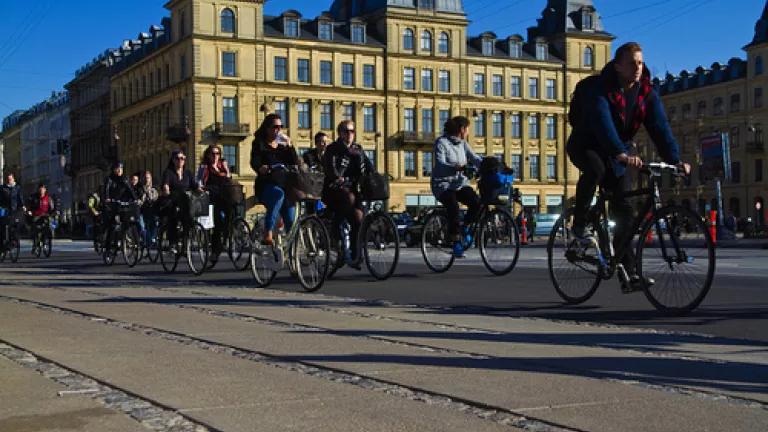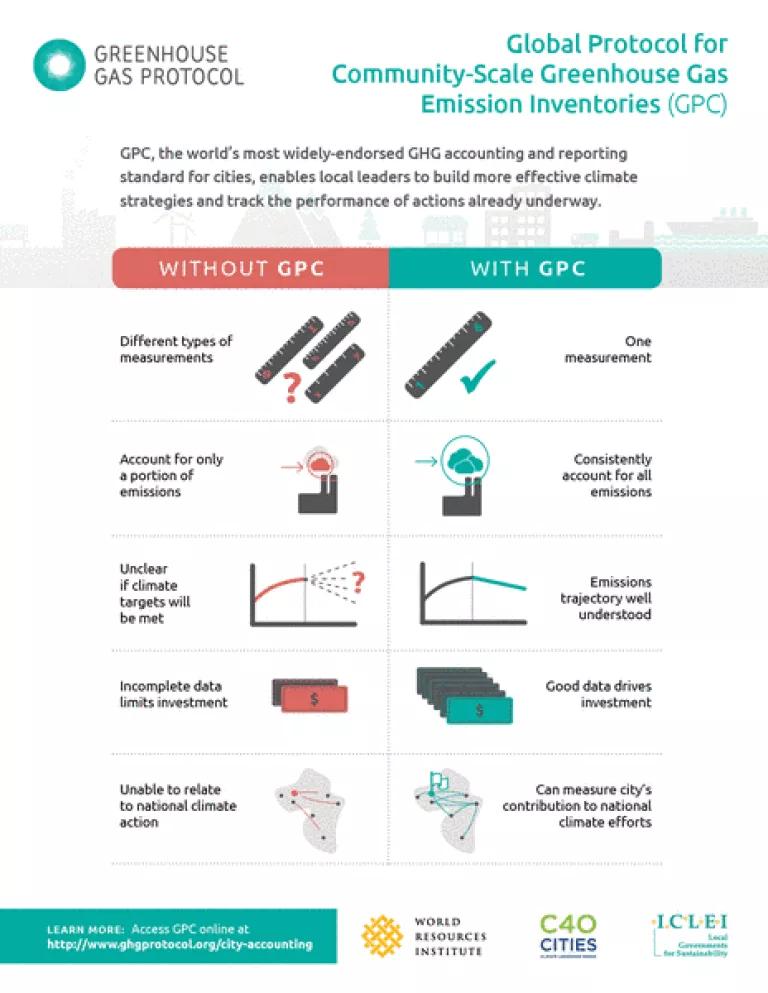
If you're driving your car in suburban Copenhagen, the newly installed LED streetlights will brighten as you approach, then dim once you pass. If you're riding your bike, sensors embedded in those lights will soon tell you the fastest route home.
This is just one example of the energy-saving measures the city is installing into a growing network of smart sensors embedded in streetlights, all part of Copenhagen's effort to become the first carbon-neutral capital by 2025.
Over the next three years, cities worldwide are expected to replace 50 million aging streetlights with LEDs, which use 85 percent less energy than traditional bulbs and last far longer. Hundreds of cities are also following Copenhagen's lead in smart technology, installing sensory networks in streetlights that will be able to deliver information on traffic congestion, trash cans that need to be emptied and other city services.
Local efforts like these are impressive, but how much will they actually contribute to the global effort to reduce our carbon footprint?
If all cities took aggressive new efforts to reduce energy use, by 2050 they could reduce greenhouse gas emissions by the equivalent of half of annual global coal use, according to a report issued by Michael Bloomberg, UN Special Envoy for Cities and Climate Change, and the C40 Cities Climate Leadership Group, representing 70 megacities.
Issued at the United Nation's Climate Summit in September, the report said those savings far exceeded what national policies and actions are on track to achieve-- amounting to an additional 3.7 gigatons of CO2 reduced annually by 2030. Yet "cities are rarely included in national action plans," Special Envoy Bloomberg said. As a result, cities' actions have rarely figured in the international agreements drawn up at climate summits.
In essence, cities could help nations bridge the gap between nationally promised emissions reductions and the actions needed to prevent global temperature rise, according to the report's calculations. To achieve those goals, cities would have to move aggressively, issuing new energy efficiency standards for buildings, appliances and lighting, as well as promoting efficient public transit and increased waste recycling.
Another report issued by C40 found that 228 city governments, representing 436 million people, have already set targets for reducing greenhouse gas emissions. If they meet these targets, they will cumulatively save 13 gigatons of CO2 by 2050--equivalent to what China and India together emit in a year.
And targets matter. Cities that have announced climate commitments report three times as many activities aimed at reducing emissions than cities without targets.
That's just one sign that mayors around the world are taking seriously their growing role in the fight against climate change. By 2050, more than 70 percent of the world's population is expected to live in cities.
"What happens in our cities drives the globe; climate change is the best expression of that," said Rio de Janeiro Mayor Eduardo Paes, the new leader of C40, addressing fellow mayors in Johannesburg in February.
And he pointed out that most mayors have another motivation for acting: They see green growth as a way to improve their town's quality of life. "Cutting carbon emissions and increasing resilience makes people's lives better; it means improving mobility and environmental quality," as well as fostering innovation, he said. "Caring about the environment means caring about the people."
Yet with all this varied activity around the globe, a serious stumbling block has remained: Finding a uniform way to measure and report the ultimate effect on greenhouse gases. The varying methods used by cities have raised serious questions about data quality and made it difficult to estimate the total impact.
Now there's a practical solution. Last month, C40 and ICLEI-Local Governments for Sustainability--representing 1,000 local governments worldwide--released the first widely endorsed method for measuring and reporting reductions in greenhouse gas emissions. It was launched at the Lima climate change conference--a prelude to the final conference set for December 2015 in Paris to reach a new global climate agreement.
The method, Protocol for Community-Scale Greenhouse Gas Emission Inventories (GPC), uses the same accounting principles established by the eminent roster of scientists on the Intergovernmental Panel on Climate Change.
Over 100 cities worldwide are now using beta versions of the new method to measure their emissions, according to ICLEI. Those 100 cities are home to more than 170 million people, and represent a carbon footprint comparable to Brazil's entire emissions.

This new uniform measurement system also underpins the global Compact of Mayors. Launched at the September Climate Summit in New York, the compact is an agreement by mayors to reduce their cities' emissions and vulnerability to climate change, and to track progress in a consistent way.
The Compact, the world's largest cooperative effort among cities to reduce emissions, has adopted the new measurement protocol as part of its core goals--to raise the ambition of reduction targets and improve the quality of greenhouse gas reporting--city leaders announced in Lima. Using this method, cities can report emissions through the Compact's designated central database, the carbonn Climate Registry (cCR), as well as other repositories of data. Bristol just became the 500th city to report to the climate registry.
Already some cities have been using the new measurement system as a guide towards more effective carbon reduction efforts. After conducting inventories of its greenhouse gases for 2005 and 2012 as part of the new protocol's pilot program, Rio de Janeiro used the results to initiate a series of projects in low-carbon transport, waste management, forestry, and energy efficiency.
At its Lima launch last month, UN envoy Bloomberg called the new standardized measurement system "a critical component of the Compact." He added, "It will help cities see what climate strategies are working, better target their resources, and hold themselves accountable for results."
"Cities have shown that green growth is not utopia," Rio Mayor Paes has said. Documenting the strides they've made will add to the mounting evidence that this is no utopian vision.

